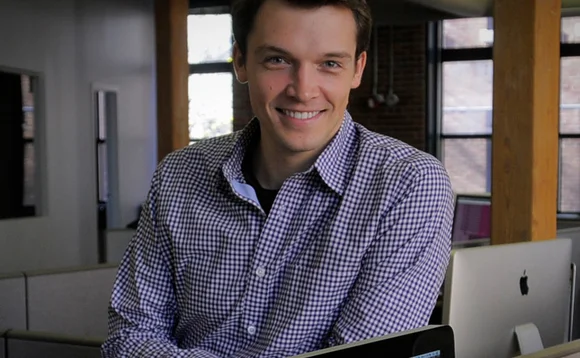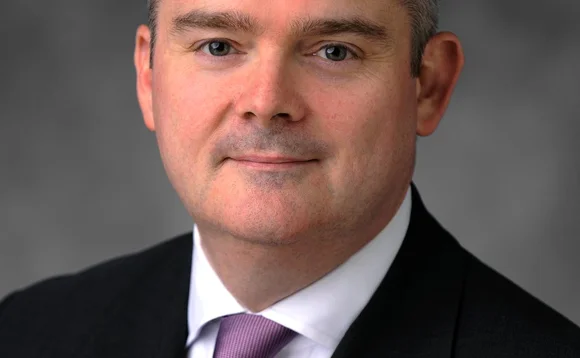Fits and Start(up)s: Chasing New Fintech Innovation Models




Incubators, accelerators, and mentoring programs have gained favor in recent years as start-up financial technology providers look to partner with clients-and potential strategic investors-earlier in the launch process, and global financial centers seek to pry away technology talent from its roost in Silicon Valley. But is active collaboration always the key to success, or just another step in a tricky process? Tim Bourgaize Murray finds out.
“We literally had nowhere to go—we were working out of my living room for a while,” Pat Kinsel says, recalling the early days of Spindle, a mobile “local discovery” app that was snapped up by Twitter in a 2013 flurry of acquisitions.
Kinsel had just moved out of Microsoft’s internal technology development lab and he, along with the small group that founded Spindle, had no shortage of ideas. What they lacked was a site to develop and test them. Reluctantly, they moved to an incubator, Dogpatch, in Boston. “It was such a novel concept then. Dogpatch was a ‘community,’ with no strings attached, other than a non-disclosure agreement about what you might overhear. To be honest, I was skeptical at first. Turns out, it was a godsend,” says Kinsel, who now works at $3.5 billion venture capital (VC) firm Polaris Partners.
Fast-forward to today, when even financial technology—often considered a laggard on the tech trend curve—has thoroughly caught up to the idea, and the options have grown. Rare is the start-up provider now that can fund and chart a successful entrance into the industry independently. Few wish to, in fact, and that is still truer for those with niche solutions for capital markets problems that aren’t mass-marketable. Meanwhile, global financial institutions aren’t only keeping tabs on emerging tech vendors; they’re shepherding them with dedicated teams, helping them go public or get acquired, and in some cases, investing directly in the companies, themselves. The common thread? More cooks in the kitchen, earlier on in the preparation.
But how much support, or places offering it, is too much of a good thing? Could the consequences of these hubs—more strategic investment and a hands-on, client-driven development process—actually stifle some companies trying to make it in a space where the power of incumbency is nearly as strong as it is in the US Congress? Sources say the effectiveness of the model, just like the start-ups themselves, comes down to precision of execution—beyond the great idea.
“There is not an appetite to do what it takes to build with raw materials from nothing, but in a lot of cases you can have your cake and eat it, too, with a management team that we trust, allowing us to influence the product in a way that will get it to a better spot than incumbent solutions are pitching.” —Bill Murphy, Blackstone
A Little Crazy
The start-up ethos is one loved by the biggest banks and the buy side alike, though in reality an imbalance remains between retail- and consumer-focused start-ups—which are numerous, and piggyback off of changes in the way people digitally bank and communicate—and the few shops focusing on the minutiae of capital markets. In one indication, of the six companies presenting at New York’s Innovation Lab this summer, a mentoring program organized by Accenture and major financial firms, only one—Lmrkts, a portfolio-compression provider—exclusively focused on the latter. And Lmrkts’ founder, a former credit trader named Lucio Biase, says it’s no coincidence.
“Being a capital markets-based start-up, you have to be a little crazy, because it’s pretty binary—there aren’t a lot of moderate successes,” Biase says. “We only have 14 clients to really target, so you’re David swinging a rock, hoping to get enough momentum to take down Goliath—in our case, the systemic risk endemic to markets measured in the hundreds of trillions. We stayed under the radar for a good bit, purposely, because it’s not in our interest to inform every venture capitalist out there of how we’re different or even of the opportunity. So what the Lab did was give us one central location to reach out, ask questions, and vet our offering once we concluded our beta. With such a small target client base, the fact that all of the nine banks that sponsor the Lab are among our potential clients was incredible. For other start-ups in the financial technology space—for example, a payment system—those banks may be just 10 percent of their base, so the benefits for them are not as concentrated as ours,” he says.
Even with that advantage, David Reilly, head of the infrastructure technology unit at Bank of America, who helped select Lmrkts as one of the bank’s 2014 mentees at the Lab, tells Waters that the practical challenges for start-ups are still immense, despite the tools out there available to help them launch quickly.
“The advent of the cloud has enabled companies to scale their services, but well beyond their support capabilities,” Reilly says. “Coming up with good technology is hard, but selling to and supporting organizations like ours is even harder. While we would like our environment to reflect that of web-scale companies, it will never look like them. We have more applications with great diversity and global regulatory requirements, so it takes a different set of competencies to crack our environment. The extended sales cycle is definitely a challenge, too. So the more we can do to coach them, especially about the contractual bar of control around regulation, is a big deal.”
Complex Dance
Joe Beyers, entrepreneur and CEO at Inventergy who formerly ran the intellectual property (IP) team at HP, points to IP as another critical challenge investors must consider.
"When launching startups, I realized while when we were creating technology and recruiting investment money, it would be reasonably easy for someone to take our ideas and replicate them and destroy my business model, so a big chunk of my invested capital was spent on patent development, to better ensure that I can protect that invention," he explains. The other purpose of that strategy is that if the technology takes longer than expected or market success isn't what was expected, there is greater residual value in the technology to license that IP to companies with the wherewithal to bring it to market. "Sometimes a startup can't reach that velocity or raise enough capital to get to market, but they can create the idea itself, and for the investors there, if you have that patent portfolio in place, you can recover some or maybe even all of your investment, just by the licensing of the IP itself. So for a startup, I think that's very important."
Such a combination of factors is why Kinsel calls the early start-up process a “complex dance” that, besides its legal complexity, is often hindered by growing pains around comunication and messaging, as well.
“As a start-up, you need to have credibility with the purchasers, and to do that you need to be conversant in the space,” Kinsel says. “To make it happen, they don’t necessarily need a client to work with, but domain expertise they do need. I constantly meet with fintech start-ups to hear their pitch and see their product, and it’s not that they’re lying; they simply haven’t figured out how to explain themselves, and usually the more compelling story is in what they’re not saying. The other thing is the nature of a strategic investment: If you’re going that direction, my advice for the financial technology industry is simple. Get two, not just one. If you’re trying to sell something to banks, have multiple heavy-hitters around the table, to avoid any signaling issue for a potential investment later.”
The Surge
Some of those heavy-hitters are taking the plunge. The push in financial services toward more direct work with start-ups is a product of Silicon Valley’s fame on one hand, and on the other, the less-obvious but steady trend of entrepreneurial types landing in C-suites at major banks and investment managers. One of them, Blackstone CTO Bill Murphy, helped found Capital IQ, before it was bought by S&P. The mentality, he says, is tough to kick.
“That’s always the way I’m thinking, in terms of creating something from nothing,” says Murphy, who has overseen the alternative asset manager’s new “Innovations” program that has directly invested in 11 different technology partners of the firm with varying degrees of involvement, the most recent being a customer relationship management (CRM) specialist called Cloud Theory that augments the SalesForce.com interface for investment management. “Here, it’s not creating from scratch. There is not an appetite to do what it takes to build with raw materials from nothing, but in a lot of cases you can have your cake and eat it, too, with a management team that we trust, allowing us to influence the product in a way that will get it to a better spot than incumbent solutions are pitching,” he explains.
The same is true of global sell-side firms, including Bank of America, which, according to Reilly, now visits with more than 40 selected start-ups every year at its own technology summit in Northern California. Unlike Blackstone, Bank of America doesn’t invest directly, but it has helped several mentees find a buyer or go public, while the number of successful partnerships—and level of internal buy-in—has risen as well.
“The biggest differences from five years ago are that our stronger relationships with the VC community mean that our needs are better known, and there is a better fit with companies. Also, this is now a valued innovation pipeline across the bank, and is focused on the specific items that matter most. Accordingly, as we’ve gotten more directed, our ‘hit rate’ has gone up from the low double-digits then, to 17 percent today,” he explains.
Kinsel also points out that though financial technology has come slightly late to the incubator and accelerator party, the space—along with healthcare—is structurally lent to success more than other tech verticals. “Since our Spindle days, you’ve seen a surge of incubators. Some of them, like Dogpatch, are very open; some look to add some value; and others like to take an equity stake right away,” says Kinsel. “Because there is so much seed money available, there are a ton of fintech companies out there that have raised $1 million or $1.5 million, and as a result, to be a Series A investor, there are more companies to choose from, with support around them, and in general that’s why you’re seeing large VCs move up the investment stack: more opportunities and better knowledge around what a company is doing. From that perspective, an incubator is a great way to see 15 shops at work, and get to know them.”
One By One
So, do incubators and mentoring spell the end of traditional, more hands-off funding arrangements for financial technology? Not yet, and not exactly. After all, even Dogpatch was born out of Polaris—a VC bellwether.
No matter their role in the start-up process, most sources confirm it’s still possible, if unlikely, for a start-up to succeed without concerted collaboration or early client feedback; now it’s simply a matter of expanded choice, and perhaps in the longer term, adjusted expectations.
For the start-up, the question is which incubator or investment type to choose, while for a strategic partner that may also be a client, it’s a somewhat more selfish question: What works for us? But in both cases, despite the energetic reputation of start-up investment, the most common strategy—so far—is to tread lightly.
Lmrkts, for example, was initially self-funded, before Biase started looking for early strategic investments—rather than venture funding—to avoid the terms and investor protections typically required by VCs. “The protections are punitive enough that to a person outside the space, they would seem totally absurd. But we understand: it’s the nature of the beast. Early-stage VCs are quite candid about their low hit rates, so they have to charge as the hits have to carry the misses,” he says.
Reilly strikes a similarly careful tenor on Bank of America’s start-up work, acknowledging that working with a tier-one institution can skew the direction of a company still in its infancy. The reality is that, even with an improved hit rate, four out of five still swing and miss. “We build relationships with start-ups where we feel the value of their contributions will not be overshadowed, or diminished, by working with us,” he says.
For Blackstone, it comes back to preserving the rigor and yes, the slightly conservative “financial” in the financial technology investment process, Murphy adds. “So far as direct technology investments of this kind go, I don’t think it’s a full trend yet across private equity. The show-me stage is still where we are,” he says. “There’s a lot of industry experience that says this can work if you do it the right way. Applying it to our industry is uniquely interesting because of the breadth of use-cases that could be hit, but it’s also a challenge given the relatively small size of the organizations. We do it just the way we do every investment at Blackstone: One by one, do they meet the merits and provide strategic value? It’s like any deal that goes through our investment committees throughout the firm. If we never find another deal, we won’t do one. I don’t expect that to happen, but that’s the way we look at it.”
Temptation
It’s a lesson the incubators could heed, too, says Polaris’ Kinsel. “There are so many out there now, and as a result, over the years the quality has gone down,” he explains. “Just like seed or venture funds, places eventually live or die based on track record. Today, tech firms really want to go to seed accelerators like Y Combinator and Techstars, because they have that widespread success—but for fintech, it’s too early to know which are really helping accelerate. One or two will really be standouts, and there will be a flight to quality. In terms of offerings, all of them try something slightly different, but as a baseline, I do like those that actually do take equity in the company. In the current environment, that vested interest is important.”
Likewise, burnishing a collaborative program’s reputation is also a matter of continuously engaging start-ups and attracting them back as they mature. As Biase says of the Innovation Lab, “No matter what stage we’re at, we’d be foolish to say no to another opportunity like this. Even if we were wildly successful, to dialogue again with the participating banks as a mentee vs. a vendor is invaluable, because the size of the problem we’re solving is greater than our team’s collective experience. Additionally, as a small and nimble entity, we know we can integrate clients’ input more directly and pivot more quickly than a larger company—if there were, for example, an urgent need for a new foreign-exchange or repo-compression solution down the road.”
And that sentiment, or temptation, Reilly says, exposes both the opportunity and the challenge of these increasingly important relationships.
“The potential is enormous,” he says. “If you look across our partner portfolio today, there are a couple like Lmrkts—providers that can do one very specific thing very, very well. When you’re responsible for an enterprise like ours, we look for that specialization. It’s fine to evolve so these companies can adapt to our needs and do it quickly, but we beg them not to try to be all things to all customers and stay true to themselves.”
Salient Points
- New relationship structures—including mentoring programs, incubators, and direct investments by client firms—have evolved to face new practical and funding challenges for start-up financial technology providers.
- The benefits of catching up this Silicon Valley-style approach are beginning to show on both the vendor and client sides, as niche capital markets-specific problems can be tackled, and specialization of broader platforms for financial services can be achieved with closer relationships and vetting of new products.
- On the other hand, venture capital experts and participants in these programs alike do point out their potential crowding effect, both in terms of an oversaturation of incubator venues currently on offer, and potentially picking “winners” earlier on in the development process as part of a more collaborative approach.
Only users who have a paid subscription or are part of a corporate subscription are able to print or copy content.
To access these options, along with all other subscription benefits, please contact info@waterstechnology.com or view our subscription options here: https://subscriptions.waterstechnology.com/subscribe
You are currently unable to print this content. Please contact info@waterstechnology.com to find out more.
You are currently unable to copy this content. Please contact info@waterstechnology.com to find out more.
Copyright Infopro Digital Limited. All rights reserved.
As outlined in our terms and conditions, https://www.infopro-digital.com/terms-and-conditions/subscriptions/ (point 2.4), printing is limited to a single copy.
If you would like to purchase additional rights please email info@waterstechnology.com
Copyright Infopro Digital Limited. All rights reserved.
You may share this content using our article tools. As outlined in our terms and conditions, https://www.infopro-digital.com/terms-and-conditions/subscriptions/ (clause 2.4), an Authorised User may only make one copy of the materials for their own personal use. You must also comply with the restrictions in clause 2.5.
If you would like to purchase additional rights please email info@waterstechnology.com
More on Emerging Technologies
Market data costs defy cyclicality
Trading firms continue to grapple with escalating market data costs. Can innovative solutions and strategic approaches bring relief?
As trading firms embrace AI, so do hackers
According to a Google cybersecurity report, cybercriminals are turning to AI to sharpen their attacks.
AI & data enablement: A looming reality or pipe dream?
Waters Wrap: The promise of AI and agents is massive, and real-world success stories are trickling out. But Anthony notes that firms still need to be hyper-focused on getting the data foundation correct before adding layers.
Waters Wavelength Ep. 343: Broadridge’s Jason Birmingham
This week, Jason Birmingham of Broadridge talks with Tony about the importance of fundamentals as technology rapidly evolves.
Data standardization is the ‘trust accelerator’ for broader AI adoption
In this guest column, data product managers at Fitch Solutions explain AI’s impact on credit and investment risk management.
BNY inks AI deal with Google, Broadridge moves proxy voting to AWS, Expero delivers ICE market data, and more
The Waters Cooler: TSX Venture Exchange data hits the blockchain, SmartTrade acquires Kace, and garage doors link to cloud costs in this week’s news roundup.
Everyone wants to tokenize the assets. What about the data?
The IMD Wrap: With exchanges moving market data on-chain, Wei-Shen believes there’s a need to standardize licensing agreements.
Google, CME say they’ve proved cloud can support HFT—now what?
After demonstrating in September that ultra-low-latency trading can be facilitated in the cloud, the exchange and tech giant are hoping to see barriers to entry come down.







